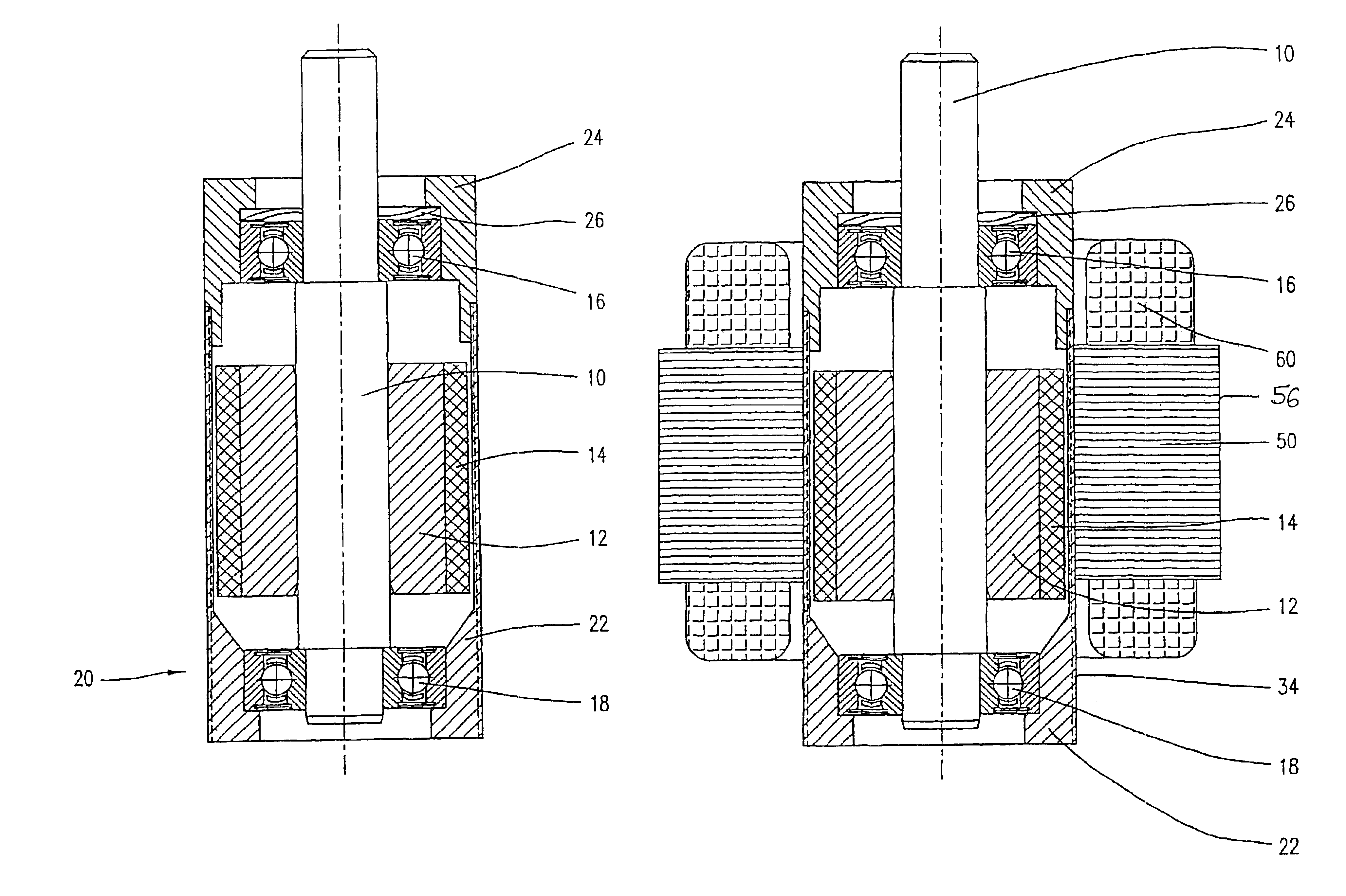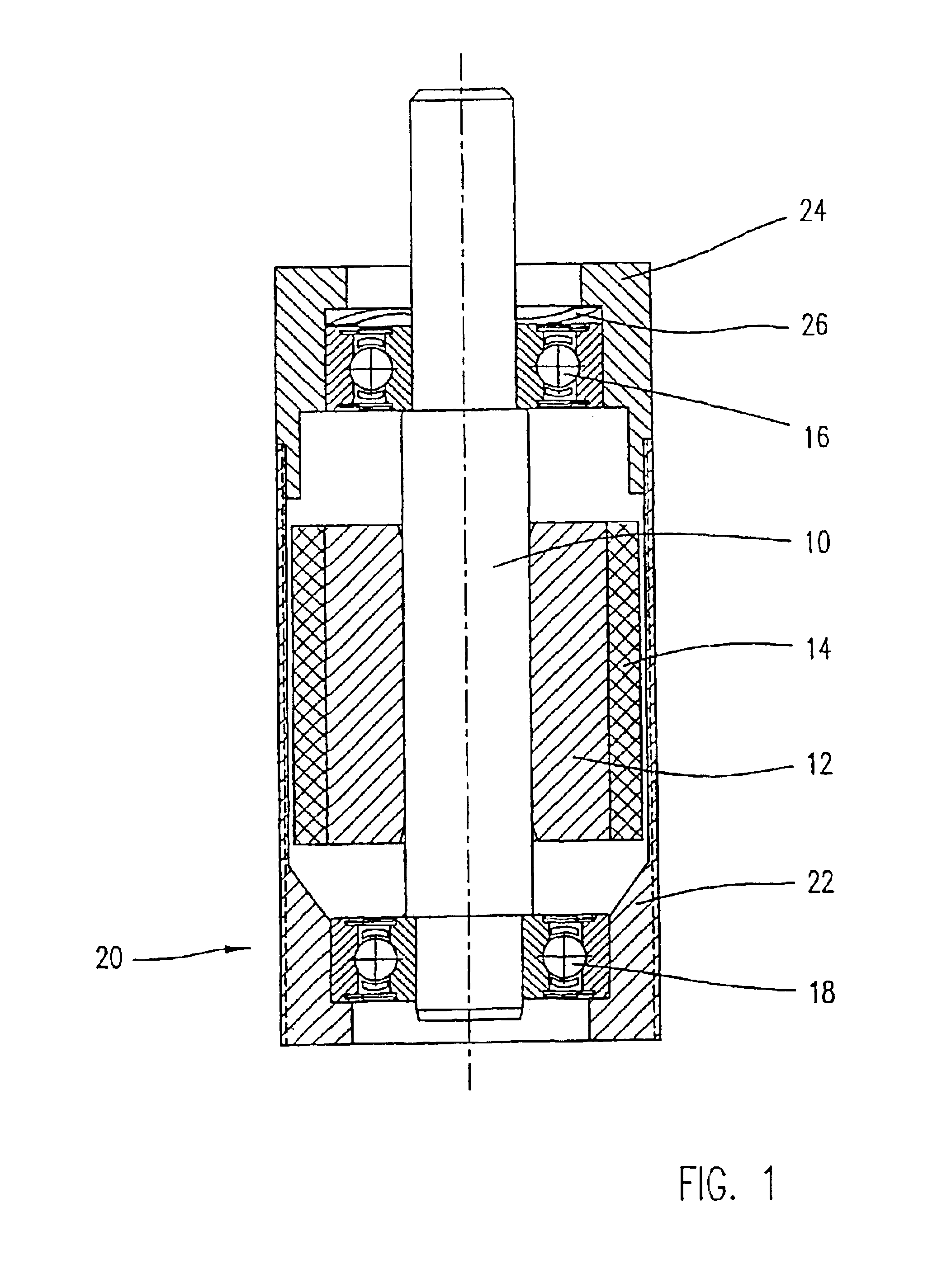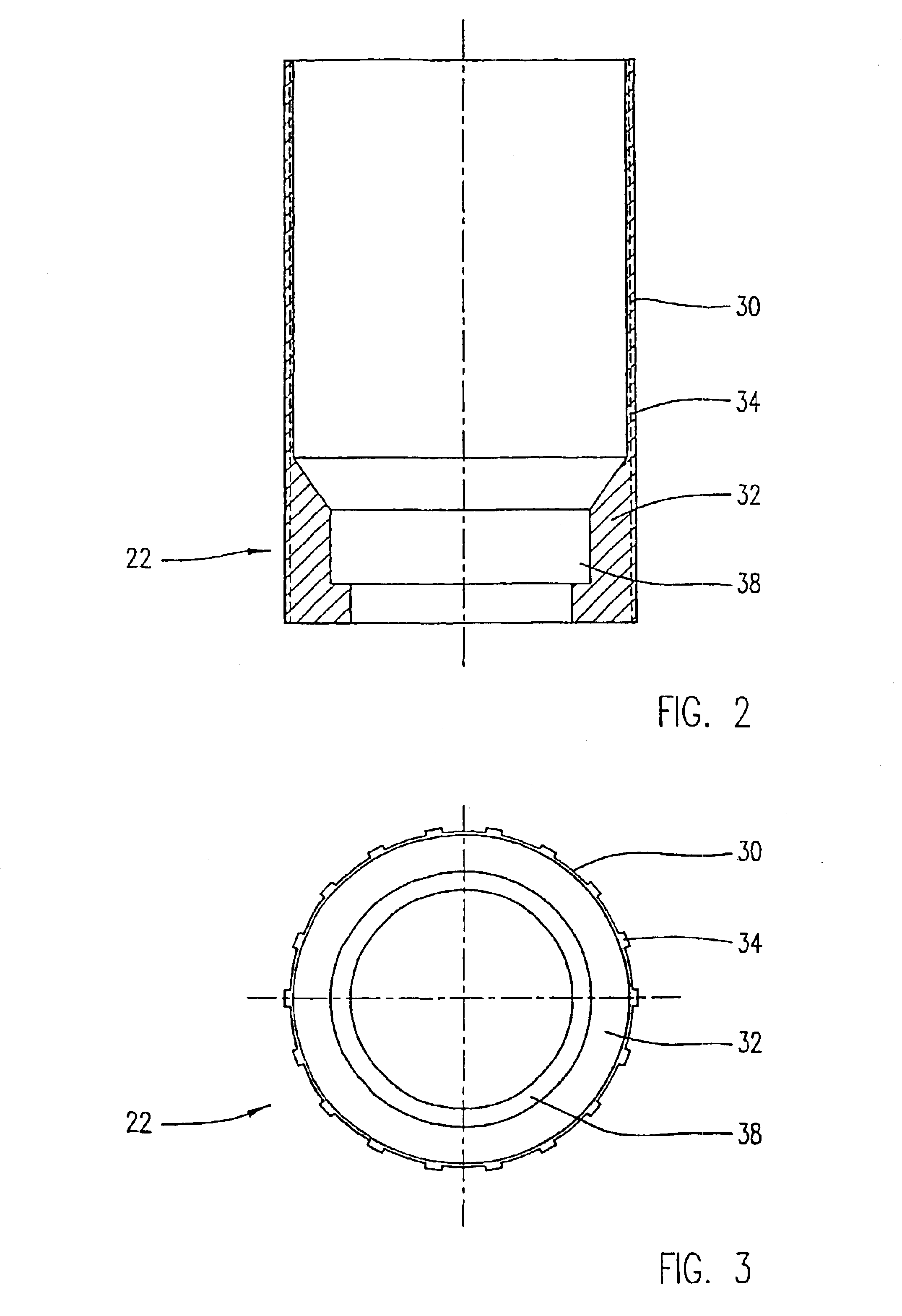Rotor assembly for an electric motor and electric motor with internal rotor
- Summary
- Abstract
- Description
- Claims
- Application Information
AI Technical Summary
Benefits of technology
Problems solved by technology
Method used
Image
Examples
Embodiment Construction
[0037]FIG. 1 shows a cross-sectional view of a preferred embodiment of a rotor assembly according to the invention. The rotor assembly according to the invention comprises a rotor shaft 10 carrying a yoke ring 12 made of a soft magnetic material such as iron. A preferably annular permanent magnet 14 is attached on the yoke ring 12. The shaft 10 is rotatably journaled in bearings 16, 18, wherein the bearings 16, 18 may be formed as antifriction or friction bearings and specifically as roller bearings. The rotor which is formed here by the rotor shaft 10, the yoke ring 12 and the permanent magnet 14 is enclosed in a sleeve 20 comprising an encapsulation section 22 and a flange section 24 which will be explained in detail with reference to the FIGS. 2 to 5.
[0038]The bearings 16, 18 may be pre-mounted on the rotor shaft 10 and are placed in the end faces of the sleeve sections 22, 24 and are pressed in them and / or adhered to them or are held in another suitable way. In the illustrated e...
PUM
 Login to View More
Login to View More Abstract
Description
Claims
Application Information
 Login to View More
Login to View More - R&D
- Intellectual Property
- Life Sciences
- Materials
- Tech Scout
- Unparalleled Data Quality
- Higher Quality Content
- 60% Fewer Hallucinations
Browse by: Latest US Patents, China's latest patents, Technical Efficacy Thesaurus, Application Domain, Technology Topic, Popular Technical Reports.
© 2025 PatSnap. All rights reserved.Legal|Privacy policy|Modern Slavery Act Transparency Statement|Sitemap|About US| Contact US: help@patsnap.com



